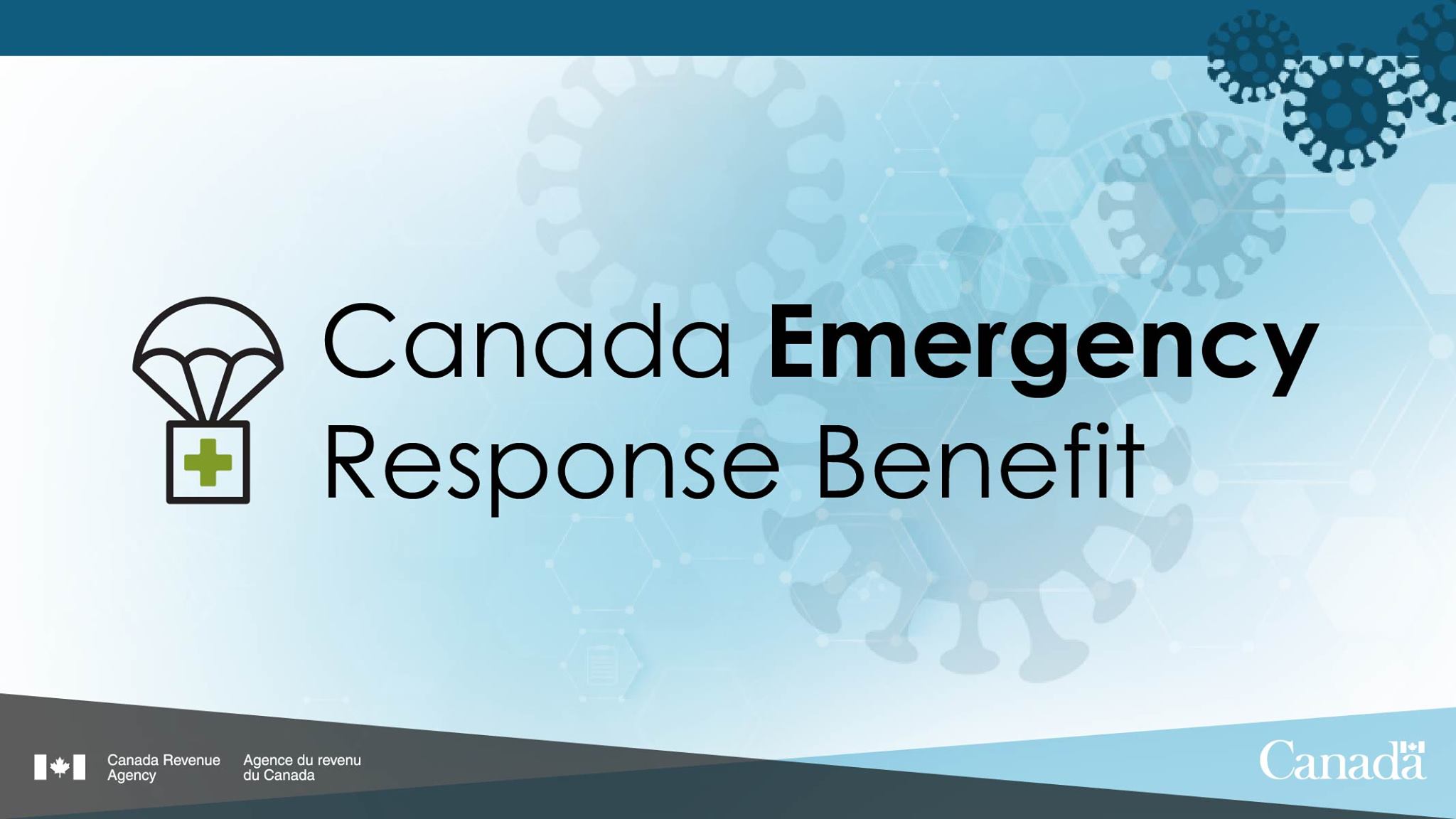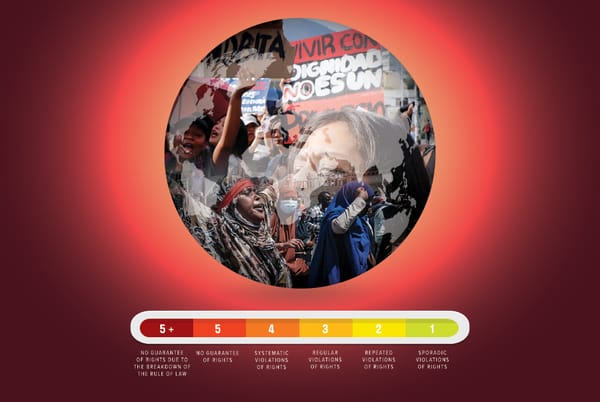Earlier this month, Auditor General (AG) Karen Hogan released a final report assessing the income support programs initiated during the COVID-19 pandemic.
The AG’s report provides an in-depth look at the Canada Emergency Response Benefit (CERB) and the various programs that followed it, as well as the more controversial Canada Emergency Wage Subsidy (CEWS), which operated as an ostensible “payroll subsidy” for employers who experienced a decline in revenue due to the pandemic.
In the report, the AG focuses on whether Employment and Social Development Canada (ESDC) and the Canada Revenue Agency (CRA) ensured payments were accurate and went to eligible recipients, undertook timely post-payment verifications and collections, and managed the programs efficiently.
The report concludes that the COVID-19 benefit programs met their intended objectives of preventing the growth of poverty during lockdowns (in fact, they reduced poverty) and ensuring a speedy economic rebound post-pandemic. However, the financial watchdog also found that the programs were managed “inefficiently,” evidenced by the number of payments that went to ineligible recipients, the limited adjustments introduced during the lifespan of CERB, CEWS and the other programs, and the slow pace of post-payment verifications and collections.
Mainstream media has mostly fixated on the finding that the government sent $4.6 billion in pandemic emergency support to ineligible individual recipients, along with the AG’s further recommendation that the government investigate an additional $27.4 billion worth of payments to individuals and businesses.
Of course, as Jeremy Appel rightly pointed out in The Orchard, the majority of media attention has focused on the payments to ineligible individuals, largely neglecting (with the exception of the Financial Post) the roughly $15.5 billion that the AG estimates went to businesses who didn’t meet the CEWS criteria.
Some coverage of the report has also tended to soft peddle its findings. Although the AG has indeed stated that the government should “clarify” whether or not it plans to forgive certain CERB over- or ineligible payments, the report by no means advocates such a course of action. Rather, its recommendations are much more focused on ramping up post-payment verification and collection activities to recover “public funds.” Thus far, ESDC and the CRA have recuperated roughly $2.3 billion. However, because neither agency disaggregated their data, it’s impossible to know how much of these monies have come from individuals and how much has been recovered from businesses.
As the AG report concedes, programs of the size and scale of the CERB and CEWS normally take “months, if not years” to get up and running. There were bound to be issues with verifying eligibility. The government rightly understood that this was an acceptable trade-off in order to protect workers and meet the objective of preventing an economic disaster as the virus raged. In fact, as the AG puts it, “The government accepted the risk that some recipients might not be eligible for benefits received.”
Yet the notable focus on support to “ineligible” individuals rather than employers during post-payment verification and collections is the entirely predictable result of both the design of the programs and of the information available to ESDC and the CRA.
Punching Down: ‘Ineligible’ Claimants And ‘Disincentives To Work’
For starters, the shape of the pandemic economic intervention was from the beginning directed toward business.
The CEWS, which ran from March 2020 to October 2021, lasted a full year longer than the CERB. The total cost of the CEWS came in at $100.7 billion, while the CERB cost $74.8 billion. The CERB, which also began in March 2020, was replaced in October 2020 with three lesser benefits (both in terms of their individual payments and coverage): the Canada Recovery Benefit (CRB), which lasted until October 202; the Canada Recovery Sickness Benefit (CRSB) and the Canada Recovery Caregiving Benefit (CRCB), both of which ran until May 2022; and the Canada Worker Lockdown Benefit (CWLB), which ran from October 2021 until May 2022, but saw very little take-up.
The CRB ended up costing roughly $28.4 billion, while the remaining worker benefits were all relatively small. The CWLB, for example, wound up paying out only $914 million. In total, benefits paid directly to workers and caregivers came out to nearly $110 billion over the course of the entire pandemic benefit lifespan. During its various cycles, the CEWS paid around $10 billion less than this to employers — a gargantuan sum when one considers the extent to which individuals outnumbered businesses.
One of the most disturbing portions of Hogan’s report, however, deals with what the AG characterizes as the “disincentives to work” supposedly introduced and exacerbated by the CERB and its successors. She writes: “We found that the government was aware from the onset of the pandemic that the introduction of COVID-19 benefits to individuals would create a disincentive to work for some recipients. [ESDC] announced changes to the [CERB] program to counter the disincentive. We also found that some lower-income recipients of the benefits replaced their previous annual earnings by more than 100 per cent using the [CERB] and by 119 per cent by staying on the [CRB] for all periods. The government assessed the impact and took steps to mitigate these issues. These included introducing incentives to get more people working, especially when the economy was reopening.”
Two things stand out about this passage. First, the AG presents the relative robustness of CERB payments as a “disincentive to work,” and considers this a technical problem that ESDC “solved,” though too late in her estimation. Of course, that CERB provided more income than pre-pandemic wages for more than one-third of people who received the benefit is an indictment of low-wage employers, not a comment on the over-generousness of the CERB. Rather than a problematic “disincentive to work,” the CERB exposed just how widespread the problems of low wages, inadequate incomes and insecure work truly are.
Second, the government chose to aid low-wage employers by curtailing benefits and thereby pushing people back into work, despite continued health risks and a lack of paid sick days across the country. The federal government’s own 10 paid sick day policy only came into force this month and still requires federally-regulated workers to wait until December 31 to access their first three days of paid sick leave.
Even after the CRB replaced the CERB and payment was reduced from $500 to $300 per week, many low-wage workers still found themselves receiving more through CRB than they would through paid labour. As the report concludes, “Low-income earners (with gross earnings of $20,000 or less per year) who received the recovery benefit for all periods (54 weeks) effectively replaced their annual income by 119 per cent.” According to the AG, this “disincentive to work” distorted the labour market at a time when employers began to be wracked by labour shortages. Such a claim requires one to believe that pre-tax earnings of $20,000 or less per year are adequate for full-time workers. The AG might believe that, but I doubt many workers do.
Even among supposedly “ineligible” recipients, a large amount of CERB benefits were paid to people who didn’t meet the criterion of having earned $5,000 in the previous year. Of the individual payments that “should be investigated further,” the AG reports that by far the largest chunk, $8.3 billion, went to people who likely earned less than $5,000 in 2019. In other words, we’re talking about some of the most low-income people in the country.
To get benefits to people quickly, the government relied on individual attestation, and only put program controls in place in July 2020. Because the deadline for 2019 income tax returns was extended from April to June 2020, between March and July, ESDC lacked the information to prevent payments going to ineligible applicants. From July 2020 onward, income tax information limited CERB funds going to individuals who didn’t earn $5,000 in 2019, though it didn’t entirely eliminate this problem.
The simple solution would have been to remove this income criterion altogether; but the principled thing to do now is forgive any ‘debts’ owed by this group of recipients entirely.
CEWS: An Employer Bonanza
From the beginning, it was clear the supports on the employer side, such as the CEWS, were far more riven with issues than the payments directed to workers. As a previous investigation showed, corporations receiving the wage subsidy continued to pay out dividends to shareholders. The government failed to place any restrictions on shareholder payments, executive compensation or questionable corporate behaviour at the initiation of the CEWS.
Although businesses were expected to demonstrate revenue declines and to subsidize their payroll expenses, there was no condition that CEWS funds had to be used directly to pay wages. Moreover, as the AG’s report finds, even the criterion of demonstrating specific revenue decline was poorly designed. There was in fact no automated pre-payment control to prevent applicants without a sufficient revenue decline from receiving subsidies.
As a result, significant CEWS payments likely went to ineligible employers. For example, the AG finds that many employers who received funds failed to ever show the required revenue loss. Yet, in contrast to CERB, the government didn’t introduce later stage verification checks to ensure ineligible employers weren’t receiving funds, even when such information was more readily available. For instance, past GST/HST data could have been used to verify employers’ claimed revenue declines but wasn’t.
The amount of CEWS funds actually recovered thus far by the government comes nowhere near the AG’s estimate of $15.5 billion that likely went to ineligible employers. The CRA began performing post-payment employer verifications in August 2020, proceeding in a series of phases and progressively revising the criteria used for selecting employers to be audited. The Agency opened 730 cases representing $1.5 billion in employer subsidies during its initial phase. Of the 712 completed cases opened during phase one, 42 per cent resulted in adjustments due to employers receiving money to which they weren’t entitled. Although the assessed amount came out to only $81.5 million — or roughly 5.4 per cent of the total audited subsidies — if this sample is any indication, there remains a lot of ill-gotten money out there in employers’ hands.
The problems inherent in CEWS should give us pause as some employer representatives advocate instituting a similar program on a permanent basis. The idea here would be to have a wage subsidy program that could kick in during downturns to discourage job losses and perhaps promote job-sharing schemes and maintain employees’ workplace attachment. Such a policy, if designed with labour at the table, could provide another important mechanism to prevent long-term unemployment and provide workers with more job security and stability. However, like CEWS, the weakness of the Canadian labour movement makes this unlikely. The last thing we need is a huge public subsidy to employers with few strings attached operating on a permanent basis.
As one additional indication of the pandemic support system’s built-in bias toward employers, individual recipients could claim only one COVID-19 benefit per period, while employers had access to multiple emergency relief programs simultaneously. It should therefore be noted that the two employer subsidy programs that replaced CEWS in October 2021, the Tourism and Hospitality Recovery Program and the Hardest-Hit Business Recovery Program, weren’t part of the AG’s audit. By contrast, of the payments to individuals that the AG identifies as warranting further investigation, well over $1.5 billion are suspected to have gone to people who received more than one pandemic benefit in a payment period. I guess if these individuals were corporations, that would’ve been fine.
Perhaps some of these issues could be tolerated or ignored if CEWS proved a huge success by its own metrics. Yet it’s difficult to even measure the program according to the government’s stated objectives. As the AG reports, while the CEWS did tend to support employers in sectors of the economy most impacted by pandemic lockdowns, limited information requirements on employers make it very difficult to assess whether CEWS succeeded in keeping businesses alive and workers employed and attached to their firms. Although businesses that received CEWS funds failed at a lower rate than those that did not, attributing any casual weight to the CEWS is next to impossible. And now, small businesses are calling for loan forgiveness.
When assessing all of this, it shouldn’t be forgotten that workers were supposed to be the ultimate beneficiaries of the CEWS program. The CEWS’ purported purpose was to encourage employers to keep workers employed or to rehire those who had been laid off due to lockdowns or pandemic revenue declines. Yet, the employer application process didn’t bother to ask for employees’ social insurance numbers, and neither ESDC nor the CRA had any way of verifying that workers stayed employed or were rehired.
The only way a wage subsidy program of this nature would have benefited workers was if labour was present at its design and had a role in overseeing its execution. Instead, Canadian unions were almost entirely left out of the picture.
The Success Of CERB And Its Lessons For The Future
CERB and its successor programs were necessary because of the inadequacy of Canada’s permanent program of unemployment insurance. Employment Insurance (EI), enfeebled by years of eligibility restrictions, low wage replacement and under-funding, simply couldn’t respond to the magnitude of COVID-19’s economic devastation. Yet, even a much improved EI system would likely still have been incapable of meeting the extraordinary needs of workers during the pandemic shutdown. The COVID-19 economic contraction was simply unprecedented, whether measured by the number and pace of jobs shed or by the pace and depth of the macroeconomic downturn. Widespread income support and economic stimulus were the only rational courses of action.
We should therefore celebrate the relative success of the CERB and the other individual support programs. They got money into workers’ hands quickly. They not only staved off an economic depression but they managed to reduce poverty in the process. They also contributed to a surprisingly fast recovery — partial and tenuous as it now appears. As the AG concludes, pandemic support programs overall “quickly offered financial relief to individuals and employers, prevented a rise in poverty, mitigated income inequalities, and helped the economy to recover from the effects of the pandemic.”
They also had a positive effect on income equality. That low-wage workers and others facing labour market insecurity were most likely to receive CERB has been known for some time. But the distributional impact of pandemic benefits is quite remarkable. It’s worth quoting the AG at length on this point: “Statistics Canada data also showed that workers with relatively lower income were among those who received the most benefit payments, which compensated their loss of income. For families with the lowest level of income, their combined income from employment, private pensions, and investments—known as market income—decreased on average by $700 (or 18 per cent) between 2019 and 2020. However, when we combined this income with government transfers (cash benefits such as child benefits, tax credits, as well as emergency response and recovery benefits for 2020)—known as after-tax income—we saw an annual income increase of $2,900 (or 16 per cent) in the same period. Although individuals from all income groups observed a growth of this income, the increase was substantial for lower-income families.”
Roughly 25 per cent of benefit recipients were sole income-earners, who of course are mostly women. People who identified as visible minorities or as Indigenous on average received benefits longer than those who didn’t identify as either.
Even outside of these identitarian considerations, the entire bottom 50 per cent of earners saw their incomes grow from 2019 to 2020 — that is, during the deepest economic contraction since the Great Depression. This was a remarkable feat and shows what a permanent expansion of income support for workers could accomplish if governments put the political will behind it.
There is, therefore, plenty to be learned from the pandemic experience when it comes to social welfare and income support.
Yet, while some imagined that the pandemic might encourage or even force governments to overhaul and reform threadbare social welfare supports and worker protections, governments seem to have learned the opposite lesson: the relative success of pandemic support programs has verified for government that temporary, emergency benefit interventions are both feasible and preferable to sustained, permanent, and expensive income maintenance.
Our task should be to learn from what worked about the CERB and other income supports and fight to make such social welfare expansion for workers permanent.







